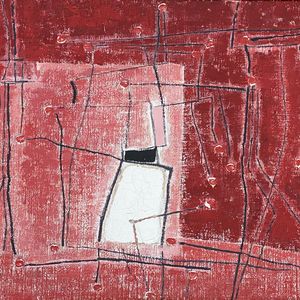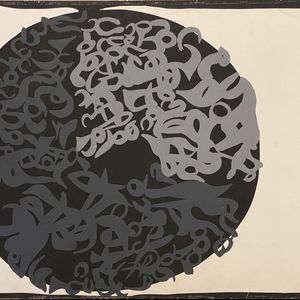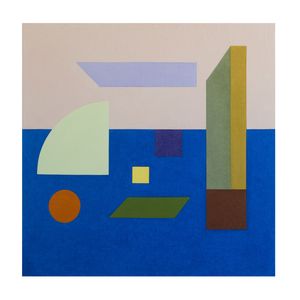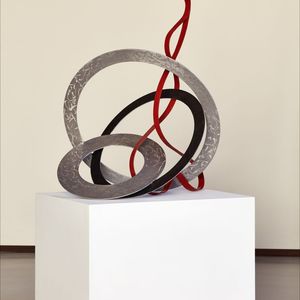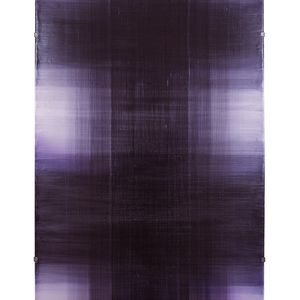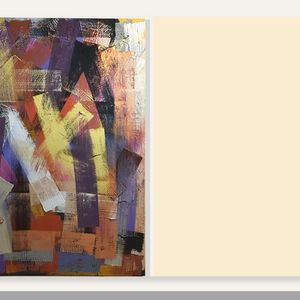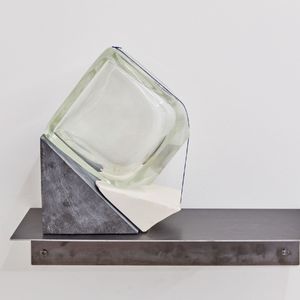Introduction to the exhibition
The history of abstract art in the avant-garde period was essentially a male story. The few women involved were usually, as wives or daughters, related to male artists, and despite their great efforts in the private sphere, they were only rarely appreciated at public events. It was not until the 1970s that women's work was finally recognised, albeit often in exhibitions that were not specifically devoted to abstraction because they were more focused on feminism.
The important exhibition by the critic Lea Vergine entitled L'altra metà dell'avanguardia (The other half of the avant-garde) in 1980 brought to light in Italy for the first time women who had been completely forgotten by art history until then. Among these artists were also a number of abstractionists, such as Carla Badiali from Como, who played an important role in the study of abstraction in Italy. For many years relegated to the role of "pupil" of Manlio Rho, her work actually displayed an autonomy and originality of research not found among her male colleagues.
In Como, in the Thirties, a cenacle of artists formed around the rationalist architect Giuseppe Terragni, who, together with the Milione group in Milan, was the only real centre of abstract research in fascist Italy. In 1941, these artists and architects together with Filippo Tommaso Marinetti formed the "Gruppo Primordiali Futuristi" (Futurist primordial group), which included two other women, Carla Prina and Cordelia Cattaneo. Both women have not yet received the critical recognition they deserve, perhaps because, for family reasons, they are associated with architects who have certainly tarnished their fame. The former was married to the Swiss architect Alberto Sartoris, and with him contributed to the creation of an important link between autarchic Italy and the European artistic milieu; the latter was the sister of the rationalist architect Cesare Cattaneo.
The exhibition Elles font l'abstraction, which will be held at the Centre Pompidou in Paris in 2021, shows the international attention for this theme, while a recent donation to the Pinacoteca di Como of works by Carla Badiali and Carla Prina may be a reason for the renewed interest in these artists in the Como region. All the more so since the Como artists, together with some other Italian artists (Carla Accardi, Regina, Bice Lazzari and Giannina Censi), were brought to the attention of the international public during that exhibition and the conference organised on that occasion by the Centre Pompidou and the AWARE (Association of Women Artists, Research and Exhibitions) association.
The critical integration of women's art in an exhibition in Como could not, therefore, fail to come from the artists who played a leading role in it.
From this small but very important core of women's contribution to the world of contemporary art, the exhibition Astratte (Abstract) draws attention to some protagonists of Italian art who have only recently come to light thanks to the artistic and critical activity of some women from the period of the struggle for women's emancipation, especially in Italy the critic Carla Lonzi and the artist Carla Accardi, and the critical work done especially in the last twenty years. The gendered readings of the art worlds have in fact also been a radical critique of the modern narrative as a place where women artists have been ignored or marginalised.
The period covered by the exhibition thus lies between the 1930s and 1990s, years in which research into the abstract has been situated in the groups and trends between geometric abstraction, informal, analytical painting, post-pictorial abstraction and progressive art. The exhibition highlights the various declinations, methods and lines of research by which non-figurative art expressed itself and continues to express itself in painting and sculpture, taking into account some major themes: sign, geometry, concept, matter, body, space.
